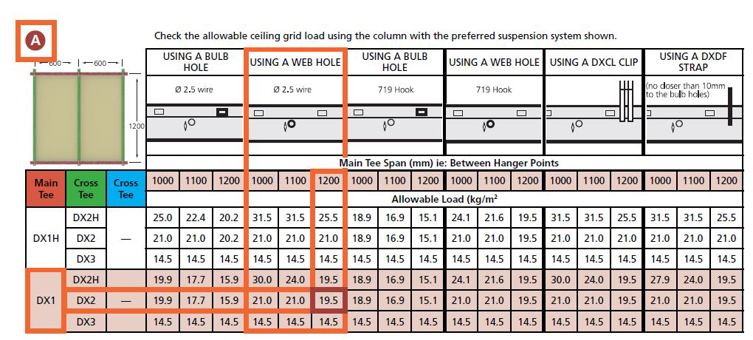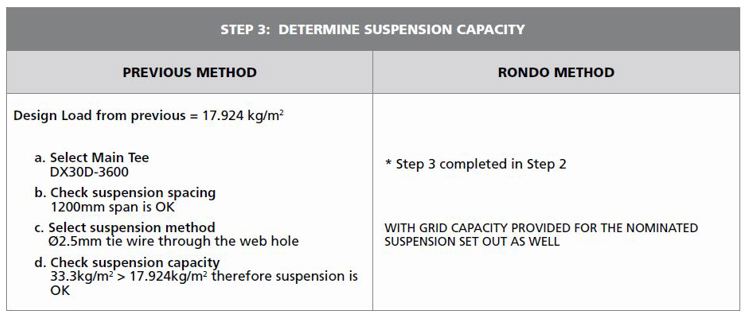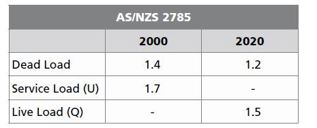When we launched our Rondo DONN® Exposed Grid Ceiling System into the market, we brought the existing load data in line with our more user-friendly Rondo format whereby you simply need to check the weight of the tile against our published number – removing the need for manual calculations which were previously required for this system.
In addition, the Rondo DONN® Exposed Grid Load Tables have now been updated to include the changes required from the new Suspended Ceiling Code Standard.
This helpful guide will demonstrate how to use our DONN® Grid Load Tables by providing a comparison between the previous method and our new simplified format as well as the updates made due to the new Standard AS/NZS2785:2020.



In the Rondo method, the calculated design load is used by direct comparison against the published tables.
Figure 1: Rondo DONN® Exposed Grid Ceiling System - GRID LAYOUT (A) LOAD TABLE


The previous ceiling code AS/NZS2785 was issued in 2000 and was way overdue for an update and resulted in significant changes and expansion of the code. There were two primary changes in the code being:
- alignment with the loading codes AS/NZS1170 series and;
- expansion of the seismic provisions within the code.
The alignment with the loading codes AS/NZS1170 series is considered the first step towards reference of the code within the National Construction Code (NCC) or New Zealand Building Code (NZBC) as applicable. However, it did require some of the load combinations to change and also for the original “service” load to be relabelled a live load (Q). Changing the service load to a live load allowed the load factor to be reduced from 1.7 down to 1.5, so there was upside to the change. This is why the Rondo DONN® load tables needed to be updated, and also why old design tables should not be used - they do not comply with the current ceiling code. See the below table for a comparison between the old and the new ceiling codes.
Additionally the seismic provisions in the new code were significantly increased to reflect current good design practice and design methodology, as well as provide some better information to the industry.



